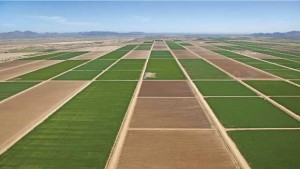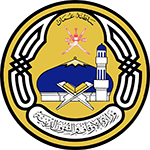Agriculure & Fisheries
 Agriculture and fisheries are Oman’s main non-oil exports. This sector accounts for around 30% of the non-oil exports. Over half of Oman’s population is still involved in the agriculture and fisheries sectors of the economy, accounting related activities such as wholesale, retail, transport and other services. A large percentage of the population live in rural areas and many others own land and property in the countryside even though they live and work in the towns.
Agriculture and fisheries are Oman’s main non-oil exports. This sector accounts for around 30% of the non-oil exports. Over half of Oman’s population is still involved in the agriculture and fisheries sectors of the economy, accounting related activities such as wholesale, retail, transport and other services. A large percentage of the population live in rural areas and many others own land and property in the countryside even though they live and work in the towns.
In view of the constraints imposed by water resources, one of the main objectives in managing the agricultural sector is to maximise economic returns without adversely affecting the delicate water balance. The policy is to create sustainable agricultural methods and crops which will provide continuous employment opportunities for Omanis and reduce the deficit in the food trade balance. However Oman with its growing population and rapidly changing society will remain a net food importing country.
Recent self-sufficiency rates estimates indicate that Oman is 64% self-sufficient in vegetables, 53% in milk, 46% in beef, 44% in eggs and 23% in mutton. Any increase in livestock production is limited by the animal feedstuff available. Sufficient quantities of dates and some other fruits are produced so that they can be exported as well as meeting local demand. The production of tomatoes, potatoes and alfalfa has doubled in recent years. Agriculture now contributes over half the national food bill for fruit and vegetables. Agriculture and fisheries are Oman’s main non-oil exports. This sector accounts for around 30% of the non-oil exports. Over half of Oman’s population is still involved in the agriculture and fisheries sectors of the economy, accounting related activities such as wholesale, retail, transport and other services. A large percentage of the population live in rural areas and many others own land and property in the countryside even though they live and work in the towns.
Agriculture and fisheries are Oman’s main non-oil exports. This sector accounts for around 30% of the non-oil exports. Over half of Oman’s population is still involved in the agriculture and fisheries sectors of the economy, accounting related activities such as wholesale, retail, transport and other services. A large percentage of the population live in rural areas and many others own land and property in the countryside even though they live and work in the towns.
In view of the constraints imposed by water resources, one of the main objectives in managing the agricultural sector is to maximise economic returns without adversely affecting the delicate water balance. The policy is to create sustainable agricultural methods and crops which will provide continuous employment opportunities for Omanis and reduce the deficit in the food trade balance. However Oman with its growing population and rapidly changing society will remain a net food importing country.
Recent self-sufficiency rates estimates indicate that Oman is 64% self-sufficient in vegetables, 53% in milk, 46% in beef, 44% in eggs and 23% in mutton. Any increase in livestock production is limited by the animal feedstuff available. Sufficient quantities of dates and some other fruits are produced so that they can be exported as well as meeting local demand. The production of tomatoes, potatoes and alfalfa has doubled in recent years. Agriculture now contributes over half the national food bill for fruit and vegetables.

